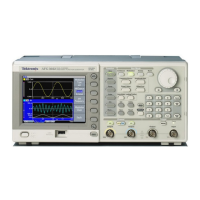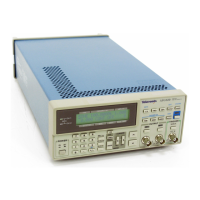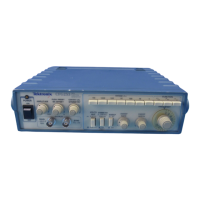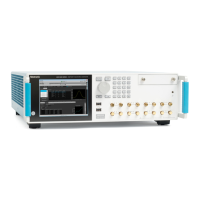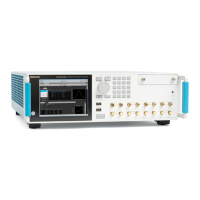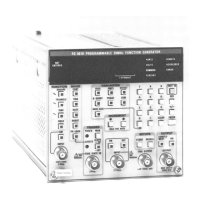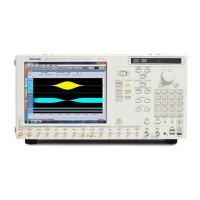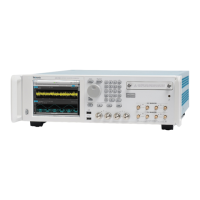Product maintenance
Electrostatic damage
prevention
This instrumen
t contains electrical components that are susceptible to damage
from electrostatic discharge. Static voltages of 1 kV to 30 kV are common in
unprotected environments.
CAUTION. Static discharge can damage any semiconductor component in this
instrument.
Observe the following precautions to avoid static damage:
Minimize handling
of static-sensitive components.
Transport and store static-sensitive components or assemblies in their original
containers, on a m
etal rail, or on conductive foam. Label any package that
contains static-sensitive assemblies or components.
Discharge the st
atic voltage from your body by wearing a wrist strap
while handling these components. Servicing static-sensitive assemblies or
components should only be performed at a static-free workstation by qualified
personnel.
Nothing capable of generating or holding a static charge should be allowed
on the workstation surface.
Keep the component leads shorted together w henever possible.
Pick up components by the body, never by the leads.
Do not slide
the components over any surface.
Avoid handling components in areas that have a floor or work surface covering
capable of g
enerating a static charge.
Do not remove the module circuit board assembly from the shield. The
shield is a
n important stiffener which prevents damage to surface-mount
components.
Use a sold
ering iron that is connected to earth ground.
Use only special antistatic, suction-type or wick-type desoldering tools.
NOTE. So
me modules and circuit boards in this instrument are RoHS compliant
and others are not. It is recommended that only lead-free solder such as SAC 305
be used for making repairs in this instrument.
Cleaning of rosin residue is not recommended. Most cleaning solvents tend to
reactivate the rosin and spread it under components where it may cause corrosion
under humid conditions. The rosin residue, if left alone, does not exhibit these
corrosive properties.
TG8000 Multiformat Test Signal Generator Service Manual 1–5
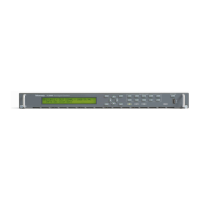
